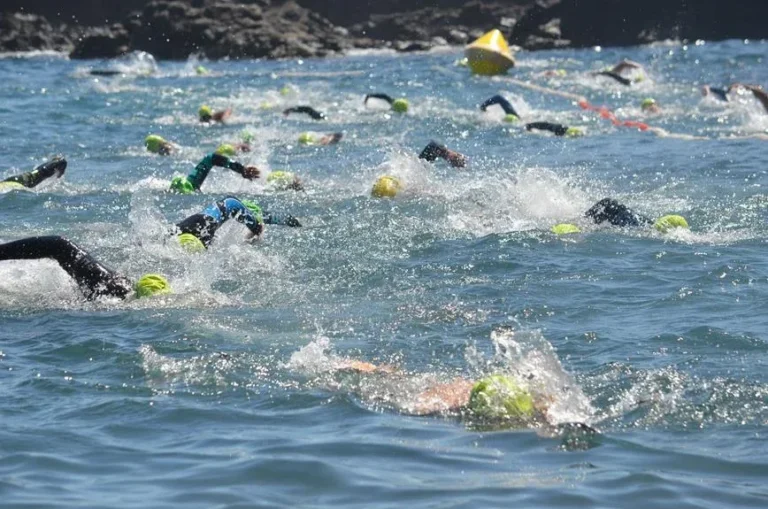When navigating the waters of triathlon success, choosing the right swim stroke can be akin to selecting the perfect tool for the job. Each stroke possesses unique advantages and challenges that can significantly impact your performance on race day.
From the streamlined efficiency of freestyle to the rhythmic grace of backstroke, understanding the nuances of these techniques is crucial for triathletes aiming to conquer the swim leg of their race.
But how do you determine which swim stroke is your ticket to triumph? Let’s explore the intricacies of each stroke and unravel the secrets to optimizing your swim performance in the world of triathlons.
Key Takeaways
- Freestyle stroke excels in speed, efficiency, and energy conservation, ideal for triathlon swims.
- Breaststroke aids in reducing drag, maintaining progress, and adjusting pace efficiently in triathlons.
- Butterfly stroke demands high energy but freestyle balances speed and conservation for triathletes.
- Mastering technique, body alignment, and stroke efficiency are pivotal for enhancing triathlon swim performance.
Freestyle Stroke Benefits
When striving for success in triathlons, embracing the benefits of the freestyle stroke is crucial for enhancing your performance in the water. The freestyle stroke, known for its efficiency and speed, is the best technique for triathlons. Its continuous propulsion, aided by alternating arm movements and a flutter kick, allows for optimal speed and minimal drag, essential for swift transitions in the water.
Maintaining a horizontal body position with the freestyle stroke not only improves your speed but also conserves energy for the other legs of the triathlon. Additionally, the ease of breathing on your side during the freestyle stroke enhances your endurance, a vital component in long-distance swims. By mastering the freestyle stroke technique through focused training, you can significantly improve your overall swim performance in triathlons, setting a strong foundation for success in the water.
Backstroke Technique Analysis
Analyzing the backstroke technique reveals the meticulous coordination required for optimal performance in competitive swimming. In backstroke, swimmers execute alternating arm movements while maintaining a flutter kick with straight legs.
Body alignment and a steady head position are crucial for efficiency and speed in this stroke. Hand entry, catch, and arm pull technique play vital roles in generating propulsion through the water.
Proper breathing timing is essential, synchronized with body rotation, to enhance performance in backstroke during triathlons. To excel in competitive swimming, focus on refining your backstroke form, ensuring each component – from arm movements to body alignment, head position to hand entry – contributes to your overall speed and efficiency.
Breaststroke Efficiency Tips
To optimize your performance in triathlons, mastering efficient breaststroke techniques is key for reducing drag and increasing overall swim efficiency. Breaststroke offers a strategic advantage in a triathlon swim, allowing you to maintain forward progress while conserving energy.
By focusing on proper breaststroke mechanics, you can minimize drag, making each stroke more efficient. This stroke is particularly useful in open water conditions where staying on course is crucial.
Utilize breaststroke to adjust your pace, regain composure, and fine-tune your technique during the swim leg of a triathlon. By mastering breaststroke techniques, you can edge out the competition and enhance your overall swim performance.
Butterfly Stroke Considerations
Considering its demanding nature, the butterfly stroke requires a high level of upper body strength and coordination. Here are three key considerations regarding the butterfly stroke in the context of triathlon swimming:
- High Energy Expenditure: The butterfly stroke is known for its intense energy demands, making it a less practical choice for triathletes looking to conserve energy for the bike and run portions of the race.
- Technical Difficulty: While mastering the butterfly stroke can enhance overall swimming ability and power, its technical complexity can be challenging for many swimmers, especially in the context of long-distance triathlon swims.
- Efficiency vs. Speed: While the butterfly stroke showcases athleticism and speed, in triathlon events, swimmers often opt for more efficient strokes like freestyle to balance speed with energy conservation, making it a strategic choice for most triathletes.
Improving Triathlon Swim Performance
Enhancing your triathlon swim performance involves a focused approach on key elements such as body position, hand entry, catch, breathing techniques, and stroke count.
In open water swimming, proper body alignment reduces drag, increasing power for more efficient swimming. Mastering hand entry and timing impacts catch, reducing shoulder strain during the swim leg. Developing a strong catch is crucial for maximizing water pull and propulsion in the water.
Utilizing proper breathing techniques tailored to each stroke and race distance can enhance your performance and efficiency. To improve your triathlon swim, consider incorporating these aspects into your training plan.
Focus on refining your swimming technique, specifically your freestyle technique, to improve your stroke mechanics and overall performance. Learning to swim more efficiently not only boosts your speed but also conserves energy for the rest of the triathlon.
Conclusion
You’ve now learned about the best swim strokes for triathlon success, from the efficient freestyle stroke to the technique-focused backstroke, and the powerful butterfly stroke.
By incorporating these strokes into your training and focusing on improving your swim performance, you’ll be better prepared for your next triathlon.
Remember to tailor your training plan to your individual needs, stay mentally strong, and keep pushing yourself to reach your full potential in the water.
Good luck on your triathlon journey!
